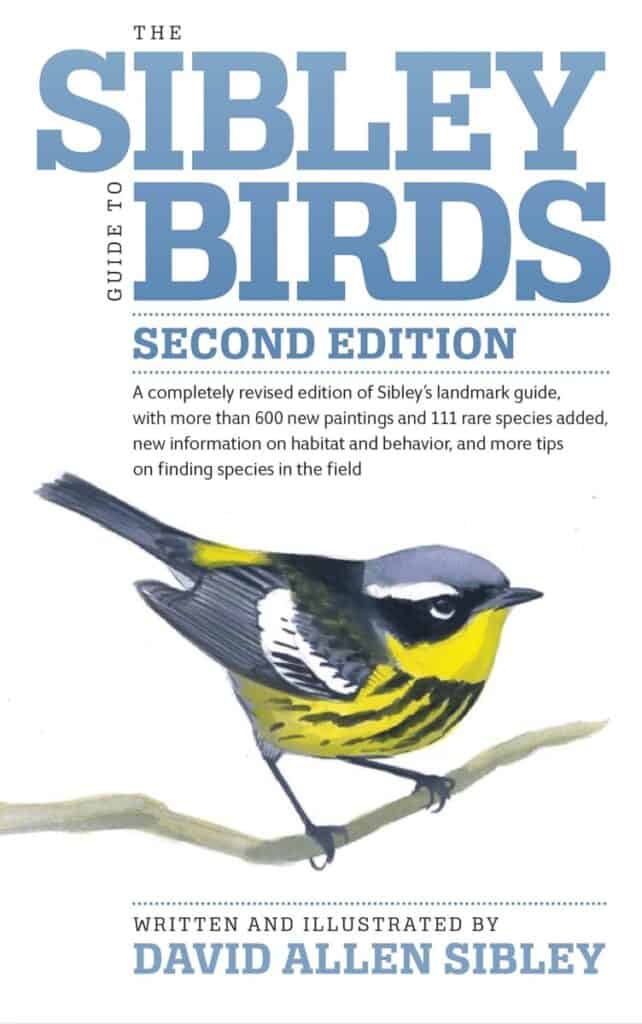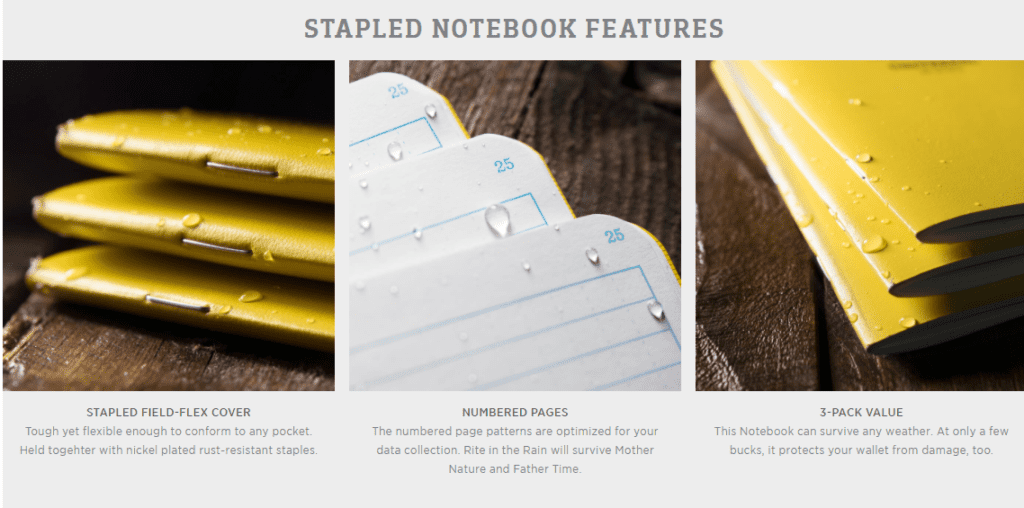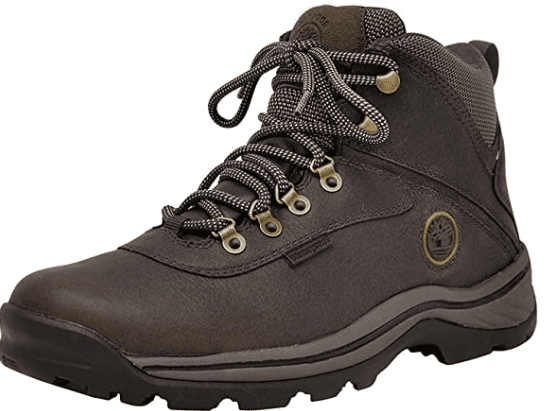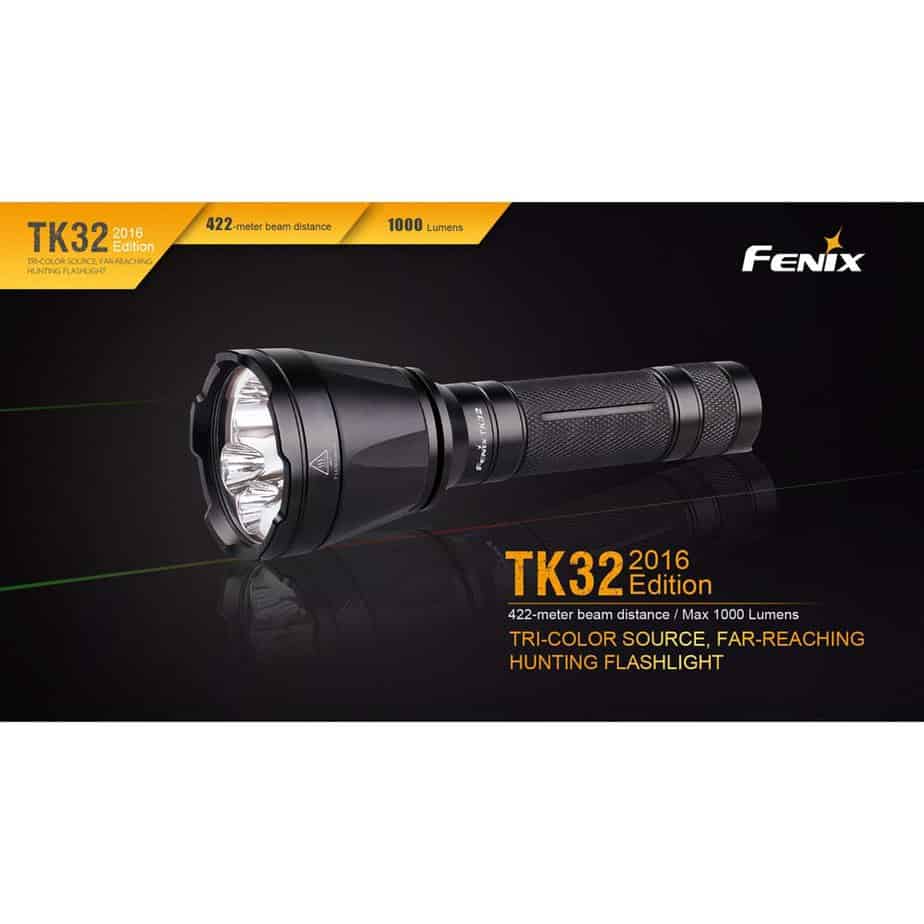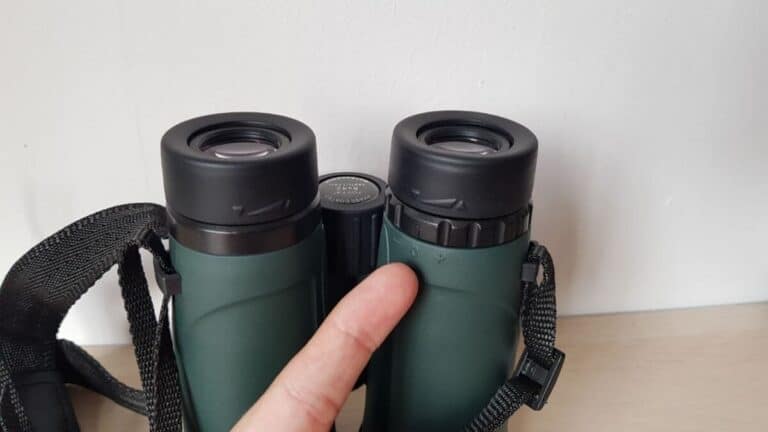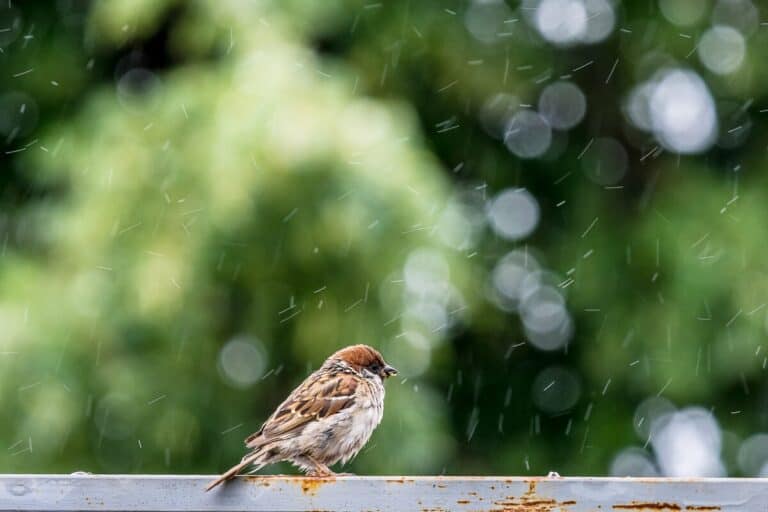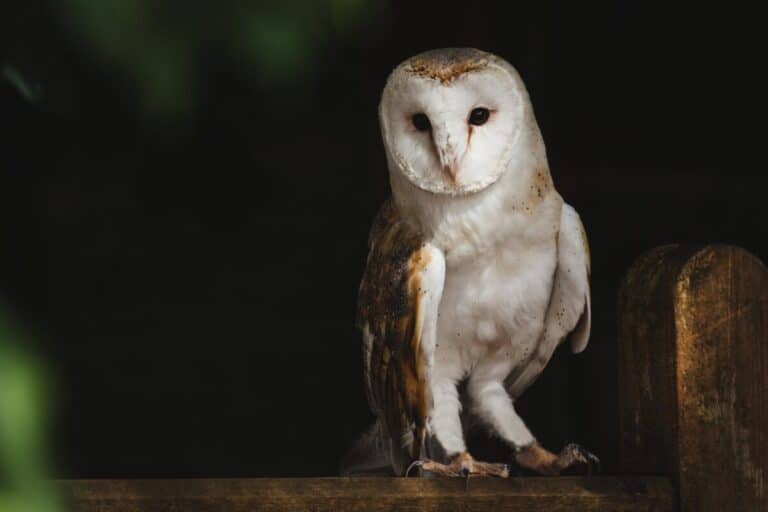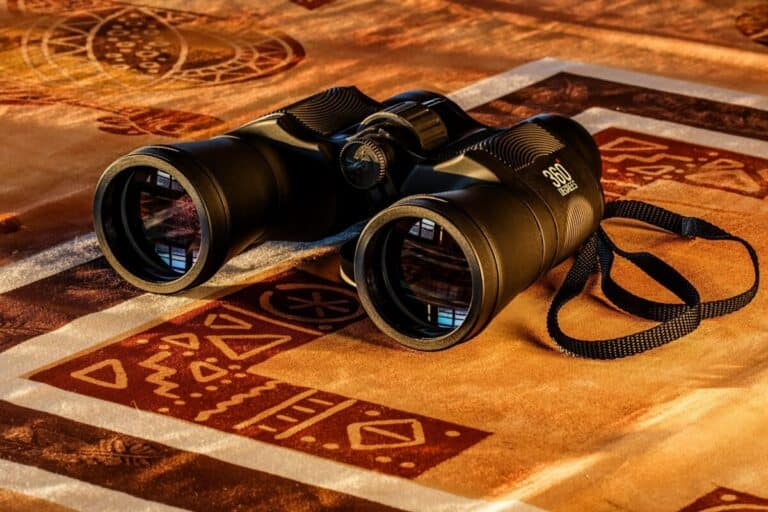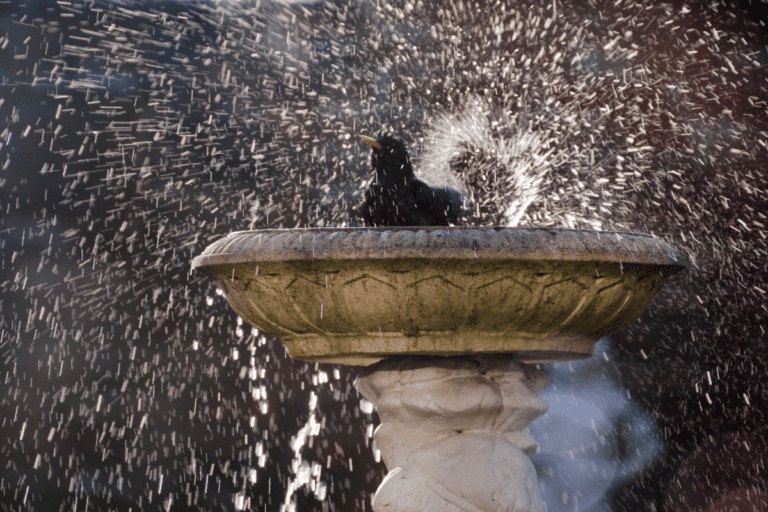10 Most Essential Bird Watching Equipment (Recommended!)
We’re reader-supported; we may earn a commission from links in this article.
When you’re out bird watching, you’ll want to make sure you have the absolute essential gear required for bird watching. Any extra weight you carry will only weight you down, and any item less; you wouldn’t get the best bird watching experience. I’ve done some research on what the essential equipment all birders need, so I compiled a list for all of us to share. Here it is:
10 Most Essential Bird Watching Equipment For Birders:
- Field Guide
- Hat
- Binoculars
- Smartphone
- Birding Notebook and Pen
- Hiking Boots
- Flashlight
- Personal Locator Beacon (PLB)
- Insect Repellent
- Phone Charger
These items are absolutely essential equipment when going birding outdoors because of the unpredictability of nature. You’ll want to be amply prepared. Read on to find out more details on each item and why I picked them!
1) Field Guide
The field guide is one of the most important in the list, especially for beginner birders. Nothing can be more frustrating than to witness a flock of beautiful birds and not being able to put an ID on them. It’s like you see them but you don’t know them! That’s where field guides come in.
Field guides are guide books that feature illustration or pictures of actual birds, with detailed descriptions about their habitat, behavior, characteristics, and some even include descriptions of their vocalizations. In the field guide, each page is allocated to one species. Typically there are multiple national guides that cover a region in the world. For example, the entire United States, Canada, Mexico, England, or Japan). In some cases for the USA, there are field guides produced for each state.
Expert birders can also benefit from the use of a field guide. If you are an expert birder, you may never know if you encounter a rare migrant species that you’ve never seen before. In that situation, you’ll need a field guide for reference!
Field Guide Apps On Smart Phones
Field guides are available also in the form of smartphone apps. These apps are a great benefit for those who don’t want to lug around heavy books in their backpack! It weighs nothing because you would have already brought your smartphone out anyways. These field guides often have really beautiful drawings and pictures of birds.
What’s great is that you can immediately listen to the recordings of the birds in the apps, so you’ll be able to identify birds by ear too! Probably the most useful function on a field guide app is the search function. To me, it’s so much easier to search something a search bar, than to flip back and forth through a book. Spend more time looking at the birds, not at your books!
Field Guide Book Recommendations
But if you’re the kind that prefers to have a physical book as a field guide, then here are some that I recommend:
- The Sibley Guide to Birds
- The Stokes Field Guide to the Birds of North America
- National Geographic Field Guide to the Birds of North America
Birdwatching field guides can also be purchased in almost every bookstore!
2) Hat
Hats can either make or break a fruitful birding trip. You never really know what kind of weather you will be experiencing while out in the field. On sunny days, a hat will go a long way in helping you withstand the sun’s rays.
Don’t just choose any hat, your hat should ideally include a wide brim so that the back of your neck is protected against the sun’s harmful UV rays. It’s also ideal to get a breathable hat in the summer so that you will not get all sweaty inside. Pick one that has a breathable netting to allow for a more comfortable fit. A great hat for birding is one that will let you last longer in the sun so that you can get that perfect shot of the bird you’ve always been waiting for.
On the topic of hats that are perfect for birding, I have done up some research for myself and wrote an article on a list of hats that are suitable. The budget that I set was $30. You can check out the article here.
3) Binoculars
I’m very sure you are exposed to what binoculars are. They are an absolute essential to birding, especially when you are observing birds that are quite far away, or quite high up in the trees. Binoculars enable you to observe birds from afar, without startling them.
Some of you may ask: “why not a spotting scope instead?”. Well, let me convince you with some simple reasons:
- A pair of decent binoculars are way more affordable than a single spotting scope. A great option for beginners or those who don’t want to spend too much money on birding just yet.
- Binoculars are more portable than a spotting scope. A spotting scope is commonly used with a stand or a tripod. This may not suit all weather situations, terrains, and may just be a little more difficult to lug along on long hikes.
If you’re a complete beginner, try to ask around and see if anyone else has any binoculars that you can borrow! If you can, try to get a pair of binoculars that have at least 8x magnification so that you can get a decent amount of zoom to see the birds.
If you’d like to start off by purchasing your own pair of binoculars, a great starter piece would start ranging from a price point from $150 to $200. A good pair that I would suggest you start with is the Celestron Nature DX 8×42 Binoculars. It’s a great pair of binoculars that start off really well for anyone who’s just getting into birding!
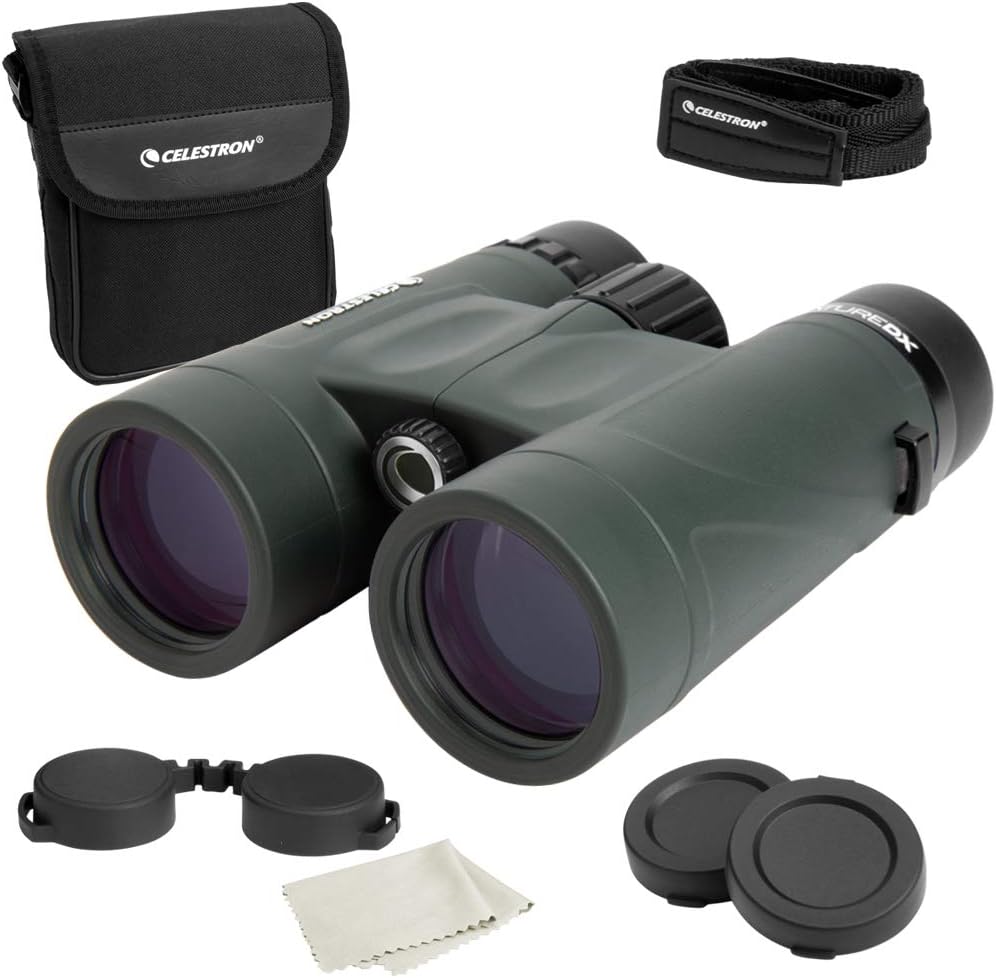
If you’d like to select another pair of binoculars on your own, I’ll just basically run through some common consideration you’ll want to know before you buy:
Type of Binoculars:
Modern binoculars are typically split into two types: roof prism and porro prism binoculars. The two types of binoculars differ in the design of the prism mirrors with the binoculars. Just by observing the shape, you can tell which is which. Porro prism binoculars have a more angular and bulkier shape, whereas roof prism binoculars have a more compact shape. Roof prism binoculars have a straight barrel that light passes through, whereas Porro prism binoculars allow light to pass through an angled reflection that is not aligned in a straight line. You can check out more information from an article I wrote on the differences here.
Magnification:
The magnification of the binoculars is usually stated on the binoculars itself. In 8×42 binoculars, for example, “8” is the magnification power and “42” is the diameter (in millimeters) of the objective lenses (the lenses closest to the object you’re viewing). A higher magnification power such as 10x may not mean the best for birding because you’ll require a more steady hand or a tripod altogether.
Field Of Vision:
The field of vision is important in birding because you’ll want to be able to look at birds as you’re scanning the area with your binoculars. Binoculars with a higher magnification of 10x will have a smaller field of vision, making it not really suitable for birding.
Once you’ve picked a pair of binoculars, you’ve probably already started to feel like more like a birder!
4) Smartphone
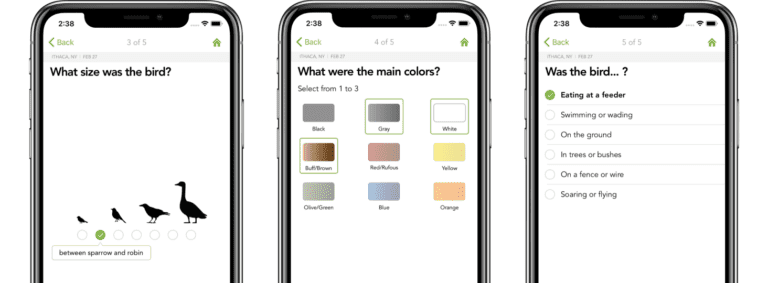
Technology is advancing really quickly and what used to be really bulky phones are now smartphones with the internet and apps in our hands. Smartphones are a must-bring because of its functionality! No, I don’t mean texting in the woods while you should be focusing on the birds. I mean the many different useful apps on your smartphone!
Earlier in the article, I mentioned smartphones that are able to be used as field guides. Well, not there’s another use to bringing your smartphone around – bird identification.
I have written a separate article on some choices of birding apps that can assist you in bird identification. Have a look here. Some of these apps even have functions that allow you to automatically identify a bird purely based on sound or a picture! How cool is that?!
5) Birding Notebook and Pen
Out in the field, you see a bird, you know it’s rough body shape, its call and the colors of its plumage, but when you head back home, you already forgot all those characteristic! If you find yourself also struggling with this, you’ll definitely need a notebook and a pen.
While typing some notes on your smartphone may seem to suffice, pen and paper is more recommended while birding. Let me give you some reasons:
Firstly, sometimes, you’ll want to be able to draw out the rough shape of the bird. You’ll need a pen to draw, which can’t really be replicated on a smartphone. If you need to get a quick sketch so that you can compare the bird to your field guide, later on, that’s totally possible too!
Secondly, when you have a notebook and pen/pencil, you’ll be able to scribble notes without worrying about it being too prim and proper. You’ll definitely feel freer to take simple notes and even express your feelings of joy on the paper too!
Thirdly, if you choose to purchase an on-the-go waterproof outdoor notebook from Rite in the Rain, you’ll be able to take down notes in ANY environment. Whether it be raining or snowing, you’ll still be writing. They are super handy and simple to use!
6) Hiking Boots
When you’re out birding, you may encounter unexpected weather situations which can include rain and snow. A pair of great waterproof hiking boots will be REALLY helpful in keeping your feet dry. (I hate having to hike around with soggy feet)
It’s extremely important that you get the right pair for your birding needs. This can really make or break your mood when out birding. A comfortable waterproof pair can really make the difference in how long you can stay outdoors without feeling mentally drained.
A great pair of hiking boots are also great for birders who tend to traverse lots of undulated terrain. If you are visiting a forest or tropical jungle, it’s very important to get a pair with a proper grip and also protects your ankles from twisting.
IF the terrain you will be traversing is marsh-like and wetter than usual jungle terrains, you’ll want to get some rubber boots, barn boots, muck boots, or Wellingtons. These are the totally waterproof boots that will keep your foot totally dry in extremely wet environments.
I recommend the Timberland Men’s White Ledge Mid Waterproof Ankle Boot if you’d like to consider one for yourself! It is 100% leather and combines great function with style so you can keep walking for ages and ages.
7) Flashlight
Flashlights are extremely important if you are out birding in the afternoon or evenings. You do NOT want to skip this piece of essential equipment before you head out. This is because you’ll never know how long you would be caught out in a thunderstorm or how early it can get dark in your area.
The worst scenario is that you are trapped out in the woods with no flashlight around you and no one to save you. Even if you were to go birding as a group and no one has a flashlight, it’s very difficult to navigate and move around at night in unfamiliar terrain.
Flashlights are a must and its batteries are too! Check that you have enough batteries in your flashlight. Also, do make sure you check that you can actually turn on your flashlight before you leave the house.
For the types of flashlights that you can get, you can choose to purchase a handheld flashlight or a headlamp for night birding. I would recommend one handheld flashlight: The Fenix TK32 by as sold on trekINN.
This flashlight is great and is recommended for birding on many birding forums for its portability, light intensity and its compact size. Do check it out if you need a good flashlight to get started!
8) Personal Locator Beacon (PLB)
You may or may not have heard of a Personal Locator Beacon before, but it’s definitely a critical equipment item essential to be added to the list.
What’s A Personal Locator Beacon?
A personal locator beacon is a device that is registered with federal search-and-rescue authorities that sends off distress signals for a rescue operation. The beacon is typically used in only life or death scenarios. Personal locator beacons were approved in the U.S. in 2003 after a campaign by the U.S. Coast Guard.
In the past, a man in his 50s ran out of drinking water while hiking in some dense woods in South California. When he activated his personal locator beacon, he was saved by a helicopter lift out of the woods. In another case, a hiker ran out of food and was saved by the U.S. Air Force Rescue Coordination Center by a dispatched helicopter when he activated his beacon.
When you activate a PLB, it sends a distress signal with your location to the international 406-MHz search-and-rescue satellite communications system, which is operated by the National Oceanic and Atmospheric Administration (NOAA) in the US.
They are pricey but they are worth it because of how robust and reliable they are in a real emergency. But please use the personal locator beacon responsibly and only in a life or death scenario in order to save expensive resources that are dispatched in a search-and-rescue mission.
I recommend going with the ACR ResQLink 400 if you’re looking for a reliable PLB. It’s really reliable and seconded by many adventurers and birders. I would recommend this especially when you are birding alone deep into the foliage.
9) Insect Repellent
Insect repellents are a must-have item for climates that allow for lots of bugs. Especially in the summer and in tropical climates, this is a must-have! Having insect repellents can also be a make-it-or-break-it kind of item. Your repellent will go a long way in keeping bugs off you, providing you with a longer time in the field!
A recommended the Insect Repellent Spray by Proven, which protects against mosquitoes, ticks, and flies. It is an odorless bug spray, with a non-greasy and clean feel that lasts for 12 hours so you can stay out longer while birding!
10) Phone Charger
A phone charger is really important if you rely on your smartphone for your bird identification purposes. Having smartphones running apps will definitely take a toll on its juices when you’re outdoors for too long. If you’re constantly on your app or taking pictures with your phone, then you should probably get a phone charger.
A typical phone charger that’s suitable for just daily use won’t cut it. You’ll want to get durable and robust phone chargers when you’re out birding for long periods of time. You don’t want it to run out of juice when you need it the most!
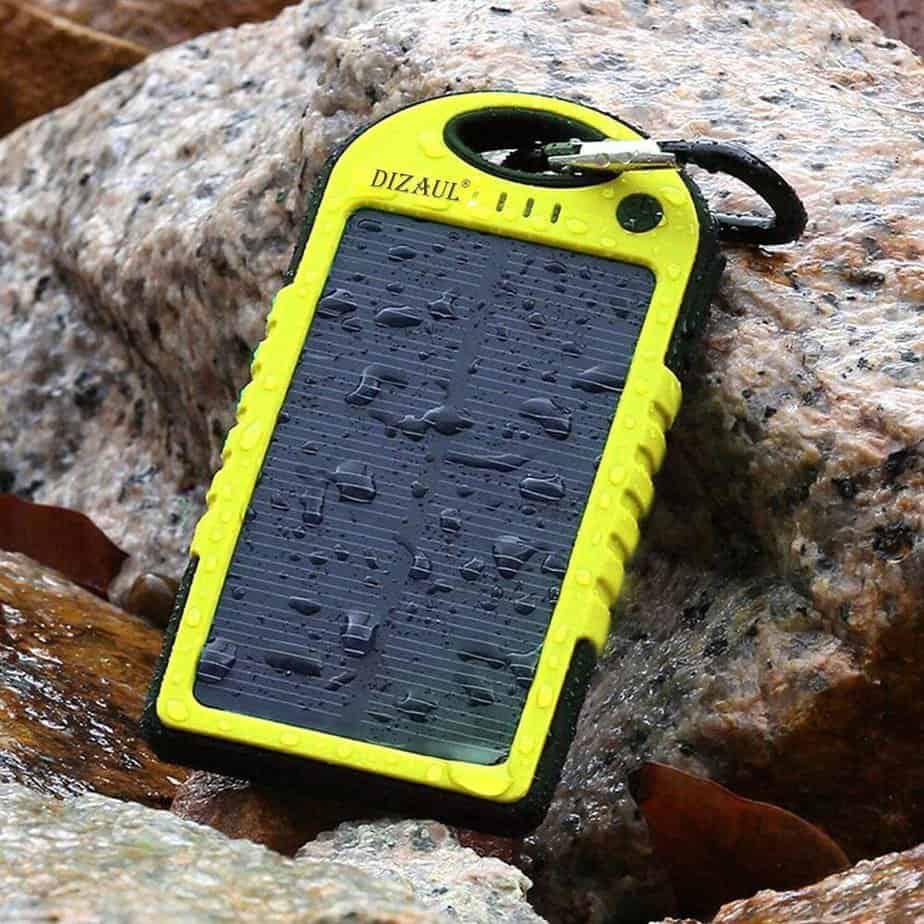
A portable phone charger that I would recommend would be the Dizaul Solar Charger because of its affordable price point, its durability, and the best part of it is its ability to charge via solar power! Do check it out!
Final Thoughts
In this long detailed list of essential birding equipment, I have included only the bare essentials so that you don’t have to be burdened by the weight of extra items just to go birding. Other lists may have varied equipment including spotting scopes, but I personally feel that these are the essentials.
Of course, this list will be great for those of you just starting out and more items can be added on as you grow in your birding experience. Hope this list of essential birding equipment and gear has helped you out!
Happy birding!
My Recommended Birding Resources:
Hey there, Justin here!
Here’s a list of all my favorite resources, products, and brands I trust and love.
My Celestron Nature DX 8×42 Binoculars: It’s a great budget pair for beginner birders. Highly valued for its price! Read my review.
Safe Paint for Bird Baths Guide: Learn about non-toxic paint for painting bird baths.
Safe Sealers for Bird Baths Guide: Learn which sealers are safe for bird baths.
Safe Paint for Bird Feeders Guide: Learn what special care needs to be taken to paint bird feeders with the right paint.
Safe Paint for Birdhouses Guide: Learn about non-toxic paint for painting birdhouses. (Not the same as bird baths!)
Bird Identification Apps Guide: 2 of my favorite birding apps are Merlin Bird ID, and eBird Mobile! Merlin is great for tracking and identifying birds, and eBird Mobile is great for tracking the birds sighted when birding.
Check out my resources page for the full list of resources I recommend!

Justin Chia
Justin is the founder and author of Birding Outdoors. He is a Nanyang Technological University (NTU) alumnus with a Bachelor of Biological Sciences and a former data analyst.
Now, Justin runs the Birding Outdoors blog full-time, hoping to share his deep love for birds, birding, and nature with others.
To unwind, Justin enjoys gaming and reading.


